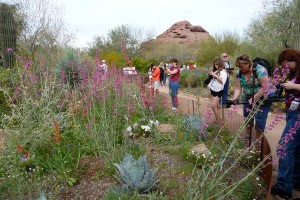Keep your blood going round and round (Part 1).
“Poor circulation” is not only painful or, at best, annoying but if untreated could lead to a sedentary lifestyle which ultimately results in serious chronic conditions such as high blood pressure, stroke, and organ damage. Symptoms can be quite inconspicuous and include things such as achy and tingly legs, cold and tired feet, swollen legs, or a wound on your leg that just will not heal. The cause could be peripheral artery disease, diabetes, obesity, edema, heredity, immobility due to injury or disability, or all of the above. Good news is that regardless of the cause, there are several non-prescription and non-invasive ways to alleviate such symptoms. Part 1 of our article deals with the venous aspect of the problem; keep an eye out for Part 2 which will discuss the arterial side.
No matter the cause, an appropriate diet, exercise, and posture protocol should be discussed with your practitioner. The least invasive therapies include the use of properly-fitted compression stockings and a digital device called the CIRCULATION BOOSTER. There are also supplements that can help with circulation, discomfort, and even associated nerve pains. These can be combined as necessary and can be used for prevention as well.
Compression stockings are made of special elastic fibres and are designed to fit quite tightly around the ankle and gradually less so as you move up the leg. The idea is to have the fibres in the fitted stocking help massage the legs in order to return blood to the heart. There are many styles, sizes, and strengths of compression stockings to cater to various needs, so it is crucial that you speak with a certified stocking fitter in order to pick the right ones for you and to have you fitted properly. Check with your physician or pharmacist if you already have a blood clot because there are special considerations for the timing of starting blood-thinners and compression stockings in such cases.
Recently, circulation stimulating machines have become more popular in homes because they have become light-weight, portable, effective and affordable. They allow you to achieve similar results at home now that were only possible at a physiotherapist’s office just a few years ago. The CIRCULATION BOOSTER by Revitive, for example, can send a gentle electrical impulse up your leg in a seated position from the base of your foot to cause gentle rhythmic muscle contractions in your calves to help move blood back towards the heart and to keep the vessels supple. It comes with TENS pad attachments so you can even target muscle soreness in other parts of your body such as your back or shoulders. It is available with gloves that can send the same stimulation through your hands and forearms. People have found it helps alleviate pain, soreness, tingling, and help heal wounds that may be a result of poor circulation.
There are many natural supplements that can benefit venous health. A few common ones include VEINSMART by Lorna Vanderhaeghe, WOBENZYM N, and OXYGENICS by Metagenics. They work through different mechanisms so can be used together. VEINSMART is a set of herbal astringents, including diosmin, horse chestnut, butcher’s broom, and hesperidin which work together to help tighten the veins in your body to help return blood to the heart. WOBENZYM N is highly popular in Europe and has been available at our pharmacy for 15 years. It is a collection of enzymes (pancreatin, papain, bromelain, trypsin, chymotrypsin, rutin) that can reduce inflammation and swelling as well as improve blood properties for enhanced flow throughout the circulatory system. OXYGENICS is a collection of natural antioxidants for many applications, including for use in venous health. An interesting tidbit about all these products is that they can also benefit hemorrhoid sufferers. All these natural formulations do have contraindications, so be sure to check with your doctor or pharmacist before supplementing.
HOMEOPATHICS are often used in patients with circulation problems because they have no side-effects and do not interact with any medications the patient may already be on. AESCULUS COMPOSITUM and VENOFLUID are often used orally for venous health. There is also a topical VARICOSE VEIN CREAM or OINTMENT which can both strengthen and tighten the superficial veins; the cream is usually preferred for the legs while the ointment is typically used for hemorrhoids.
If you are suffering from muscle or nerve pain due to peripheral circulation issues, it would be of your best interest to discuss your condition as soon as possible with your physician and pharmacist. You need to establish a diagnosis before you consider your options.
(Christine and Fred Cheng are a sister-brother pharmacist team at their unique family-owned and operated Pharmasave in Cloverdale, BC. They specialize in natural remedies and compounding for both human and veterinarian use. They would love to meet you! 604-576-2888; www.cloverdalepharmasave.com. Of course, before you begin any activity program or try any OTC supplementation, check with your physician and pharmacist.)
 By Chris Millikan
By Chris Millikan